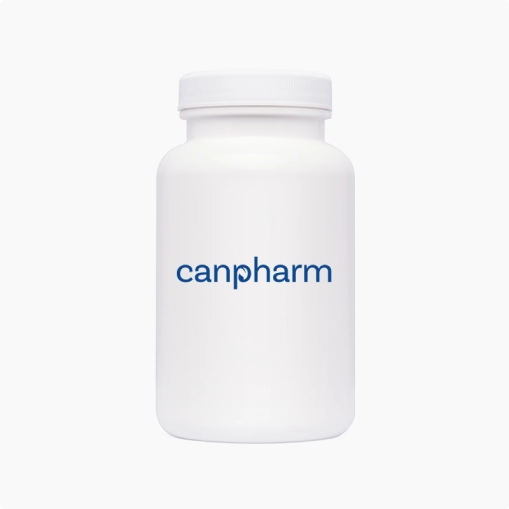
Plegridy (Peginterferon)
Out of stock
We will notify you as soon as it becomes available.
-
Description
-
Related Products
-
Related Conditions
Fact Table
| Fact Table | |
|---|---|
| Formula | C860H1353N227O255S9 |
| License | FDA approved |
| Bioavailability | Approximately 80% |
| Legal status | Prescription only |
| Chemical Name | Peginterferon beta-1a |
| Elimination half-life | 78 hours |
| Dosage (Strength) | 63 mcg, 94 mcg, 125 mcg |
| Pregnancy | Consult doctor (Category C) |
| Brands | Plegridy |
| Protein binding | Not extensively protein-bound |
| PubChem CID | 46734765 |
| MedlinePlus | a614007 |
| ChEBI | 134704 |
| ATC code | L03AB13 |
| DrugBank | DB11566 |
| KEGG | D10449 |
| Routes of administration | Subcutaneous injection |
Plegridy (peginterferon beta-1a) is a biologic medication designed for the long-term treatment of multiple sclerosis (MS), specifically relapsing-remitting forms of the disease. MS is a chronic autoimmune condition that affects the central nervous system, leading to a wide range of symptoms, including physical, mental, and sometimes psychiatric problems. Plegridy works by modulating the immune system's response, thereby reducing the frequency of relapse episodes, delaying the progression of physical disability, and managing symptoms of MS.
Before you buy Plegridy, it is crucial that you talk to your healthcare provider about potential side effects and Plegridy cost.
Directions
Plegridy is administered via subcutaneous injection. The medication is available in two forms: a pre-filled pen and a pre-filled syringe, both designed for ease of use at home. It is crucial to follow the prescription directions closely and to receive proper training from a healthcare professional before starting treatment.
The initial Plegridy dosage is typically lower to reduce the risk of side effects. The dosing schedule generally starts with a lower dose on the first day of treatment, followed by a second dose two weeks later. After these initial doses, Plegridy is usually administered once every 14 days.
Administration Technique:
- Ensure the medication is at room temperature before use.
- Choose a different injection site each time to prevent skin irritation.
- Follow the instructions provided with your Plegridy pen or syringe to prepare and administer the injection.
- Dispose of used needles and syringes safely.
- Consult with your healthcare provider for a dosing schedule tailored to your condition and response to treatment.
Ingredients
Peginterferon beta-1a: The active component responsible for Plegridy's therapeutic effects.
Cautions
Plegridy should be used with caution in patients with a history of severe depression or suicidal thoughts, liver problems, seizures, heart disease, or blood clotting disorders. It is essential to discuss your medical history with your healthcare provider before starting Plegridy.
The effects of Plegridy on pregnant women or nursing infants are not well-documented. Use during pregnancy or while breastfeeding should only occur if the potential benefits justify the potential risks.
Interactions
Plegridy may interact with other medications, potentially altering their effects or increasing the risk of adverse reactions. Inform your healthcare provider of all prescription and over-the-counter medications, supplements, and herbal products you are taking. Caution should be used when combining Plegridy with medications known to affect liver function or the immune system.
Side Effects
While Plegridy is effective in managing MS, it can cause side effects in some patients. Common side effects include:
- Injection site reactions
- Flu-like symptoms
- Headache
- Pain in muscles and joints
- Nausea
Frequently Asked Questions about Plegridy (Peginterferon beta-1a)
What is Plegridy (Peginterferon beta-1a)?
Plegridy is a prescription medicine used to treat relapsing forms of multiple sclerosis (MS), including clinically isolated syndrome, relapsing-remitting disease, and active secondary progressive disease in adults.
How does Plegridy work?
Plegridy is a type of interferon. Interferons are a group of proteins that are produced naturally by the body in response to viral infections. It's believed to work by controlling immune system activities, preventing the immune system from attacking the myelin sheath.
How is Plegridy administered?
Plegridy is injected under the skin or into the muscle every two weeks.
What are the common side effects of Plegridy?
Some common side effects include redness at the injection site and flu-like symptoms.
How can I manage injection site reactions with Plegridy?
Some tips include rotating the injection site with each injection, allowing the pen or syringe to warm to room temperature before injecting, and applying warm compresses to the injection site.
How can I manage flu-like symptoms with Plegridy?
You can manage flu-like symptoms by using over-the-counter pain and fever reducers on treatment days, staying well hydrated, and experimenting with different times for your injection.
How should I store Plegridy?
Plegridy should be stored between 36 to 46 °F (2 to 8 °C) in the refrigerator. If you cannot refrigerate your Plegridy Pen and PLEGRIDY prefilled syringes, you can store them at room temperature up to 77 °F (25 °C) for up to 30 days.
Will my insurance cover the cost of Plegridy?
Approximately 80% of commercially insured patients have a monthly copay of $30 or less for Plegridy covered under a pharmacy benefit.
What are the severe side effects of Plegridy?
Though rare, Plegridy can cause more severe side effects like depression and liver damage, so it's best to avoid drinking alcohol while taking Plegridy.
What is Plegridy's mechanism of action?
People with multiple sclerosis (MS) have an immune system that attacks their nervous system by mistake. Plegridy is a disease-modifying therapy (DMT) known as interferon beta. The exact way Plegridy treats MS needs to be better understood. But it's thought to work by calming down the immune system so that it's less likely to attack the nervous system.
